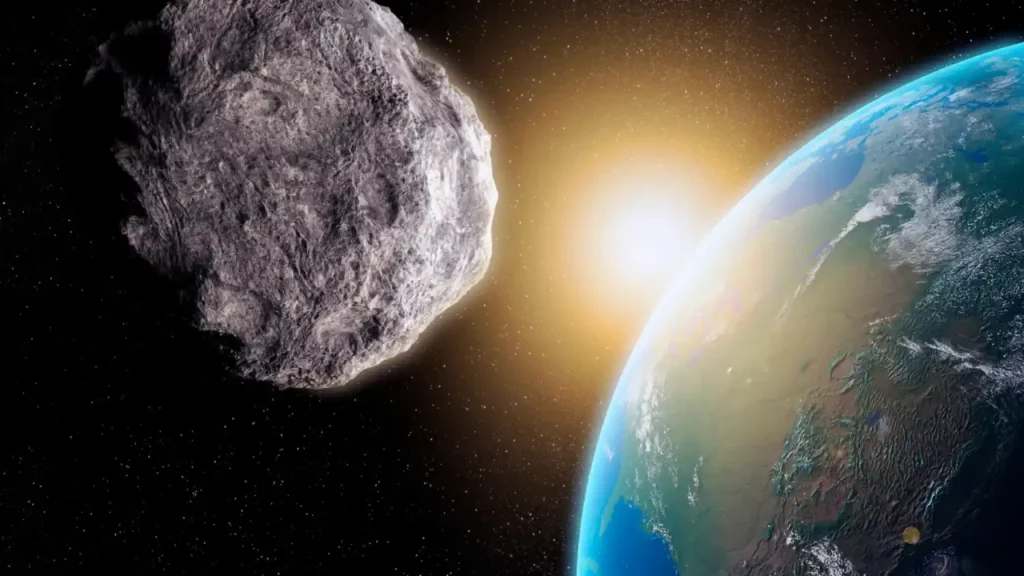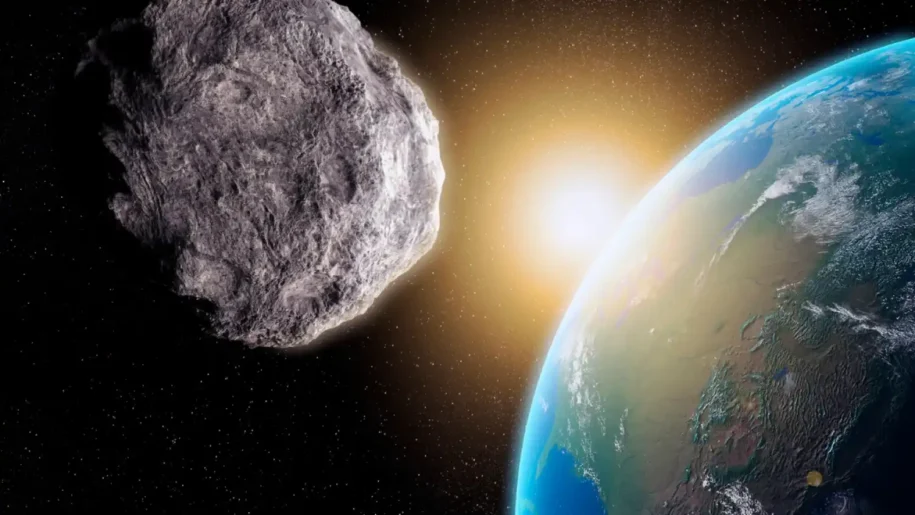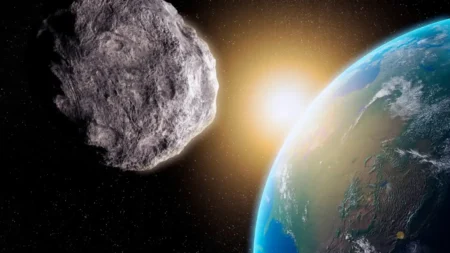NASA issues alert for near-earth asteroid 2011 MW1 approaching at high speed In a recent announcement, NASA has issued an alert regarding the near-earth asteroid 2011 MW1, which is rapidly approaching our planet at a high velocity. This celestial body, first discovered in 2011, has been closely monitored by astronomers and space agencies worldwide due to its potential risk to Earth. Here’s a detailed look at what we know so far about asteroid 2011 MW1 and the implications of its approach.
Asteroid 2011 MW1 races towards earth at 28,946 km/h, no threat, says NASA. An asteroid named 2011 MW1 is currently speeding towards Earth at a velocity of 28,946 km/h. NASA has raised an alert concerning this Apollo-class asteroid, which is about 380 feet in size
Asteroid 2011 MW1 is rapidly approaching the Earth at a speed of 28,946 km/h.
This asteroid, approximately 380 feet in size, is expected to make its closest approach to Earth on July 25th.
NASA issues alert for near-earth asteroid 2011 MW1 approaching at high speed:
NASA has issued an alert regarding the near-Earth asteroid 2011 MW1, which is rapidly approaching the Earth at a speed of 28,946 km/h. This asteroid, approximately 380 feet in size, is expected to make its closest approach to Earth on July 25th, coming within 2.4 million miles. Does 2011 MW1 pose a risk of impact? Fortunately, no. Despite its size, comparable to that of a skyscraper, it poses no threat to Earth. NASA only flags NEOs larger than 150 metres that come within 4.6 million miles
2011 MW1 has been classified as a Near Earth Asteroid (NEA) by NASA’s Jet Propulsion Laboratory due to its proximity to our planet. However, it does not fall under the category of ‘Potentially Hazardous Asteroids’ (PHAs).

Asteroids like 2011 MW1 are remnants from the formation of the solar system, primarily orbiting the sun in a manner similar to planets, but on a much smaller scale. Many asteroids reside in the main asteroid belt between Jupiter and Mars (via TOI). As of July 2024, NASA’s Solar System Dynamics website lists 1,385,217 known asteroids or minor planets.NASA issues alert for near-earth asteroid 2011 MW1
The Center for Near Earth Object Studies (CNEOS) at NASA plays a crucial role in characterizing the orbits of all NEOs, predicting their approaches to Earth, and assessing potential impacts. NEOs are defined as asteroids or comets with orbits within 120 million miles of the sun, which allows them to come close to Earth’s orbital path, posing potential risks.

What is Alarm by NASA:
In a recent announcement, NASA has issued an alert regarding the near-earth asteroid 2011 MW1, which is rapidly approaching our planet at a high velocity. This celestial body, first discovered in 2011, has been closely monitored by astronomers and space agencies worldwide due to its potential risk to Earth. Here’s a detailed look at what we know so far about asteroid 2011 MW1 and the implications of its approach.
Discovery and Tracking of 2011 MW1:
Asteroid 2011 MW1 was first spotted by astronomers in June 2011. Since its discovery, it has been classified as a Near-Earth Object (NEO), specifically an Apollo-type asteroid. These types of asteroids have orbits that cross Earth’s orbit, making them a point of interest for ongoing observation and study.NASA issues alert for near-earth asteroid 2011 MW1
Using a combination of optical telescopes and radar imaging, NASA and other space agencies have been able to determine the asteroid’s size, composition, and orbital path with increasing accuracy. The asteroid is estimated to be about 160 meters in diameter, which places it in the mid-range size for NEOs.
Current Trajectory and Speed:
NASA’s Near-Earth Object Observations (NEOO) Program has been closely monitoring the asteroid’s trajectory. Recent data indicates that 2011 MW1 is traveling at an impressive speed of approximately 12 kilometers per second (43,200 kilometers per hour). This high velocity, combined with its size, makes it a significant object of interest and concern.

Potential Impact Risk
While the likelihood of a direct impact with Earth remains low, the approach of 2011 MW1 underscores the importance of continued observation and preparation. NASA’s Planetary Defense Coordination Office (PDCO) has stated that the asteroid will pass at a distance of about 7.5 million kilometers from Earth, which is roughly 20 times the distance to the Moon. Although this is a safe distance, it is considered close in astronomical terms.
To further assess the risk, NASA employs sophisticated modeling techniques to predict the asteroid’s future positions and possible collision scenarios. Continuous monitoring allows for adjustments in these models, providing more accurate forecasts over time.
Observational Opportunities:
The approach of 2011 MW1 offers a valuable opportunity for scientists to study the asteroid up close. Ground-based telescopes, along with potential flyby missions, can gather data on its composition, rotation, and surface properties. This information is crucial for enhancing our understanding of NEOs and improving our ability to mitigate potential threats.NASA issues alert for near-earth asteroid 2011 MW1
Astronomy enthusiasts and amateur astronomers also have a chance to observe 2011 MW1 during its approach. With the right equipment and clear skies, it may be possible to spot the asteroid as a faint moving dot against the backdrop of stars.
Planetary Defense Measures:
The alert for 2011 MW1 serves as a reminder of the ongoing efforts to develop planetary defense strategies. NASA, in collaboration with international space agencies, continues to work on technologies and protocols designed to detect, track, and potentially deflect hazardous asteroids.NASA issues alert for near-earth asteroid 2011 MW1
Projects such as the Double Asteroid Redirection Test (DART) and the Near-Earth Object Camera (NEOCam) are pivotal components of these efforts. DART, for instance, aims to demonstrate the kinetic impactor technique by deliberately crashing a spacecraft into an asteroid to alter its course. NEOCam is designed to enhance detection capabilities for smaller, yet still potentially dangerous, asteroids.
While asteroid 2011 MW1 poses no immediate threat to Earth, its approach highlights the importance of vigilance and preparedness in the realm of planetary defense. Continued observations and advancements in technology are essential to safeguarding our planet from potential future impacts. As we watch 2011 MW1 make its close pass, it serves as a reminder of the dynamic and ever-changing nature of our solar system.

Stay tuned for further updates as NASA and other space agencies continue to monitor and study this fascinating near-earth object.
Sources:
- NASA Near-Earth Object Observations Program
- Planetary Defense Coordination Office (PDCO)
- Double Asteroid Redirection Test (DART) Project
- Near-Earth Object Camera (NEOCam)
The asteroid 2011 MW1 is not like other space pebbles. With a unique size of 380 feet, this near-Earth object is bigger than the majority of other asteroids in our cosmic neighbourhood. Its size is comparable to that of a skyscraper! According to NASA’s CNEOS data, it is travelling at an astounding speed of 28,946 km/h and will get near to Earth at a distance of just 2.4 million miles.
The close collision of the asteroid with Earth is a topic of great interest. Asteroid 2011 MW1 is predicted to approach closest on July 25. According to calculations made by NASA’s Jet Propulsion Laboratory (JPL), it will pass barely 443 million miles distant, or astronomically speaking, a stone’s throw away. While there is still some wiggle room, the ramifications of any deviance from its orbit are enormous; even a slight adjustment might mean the end of the world.








